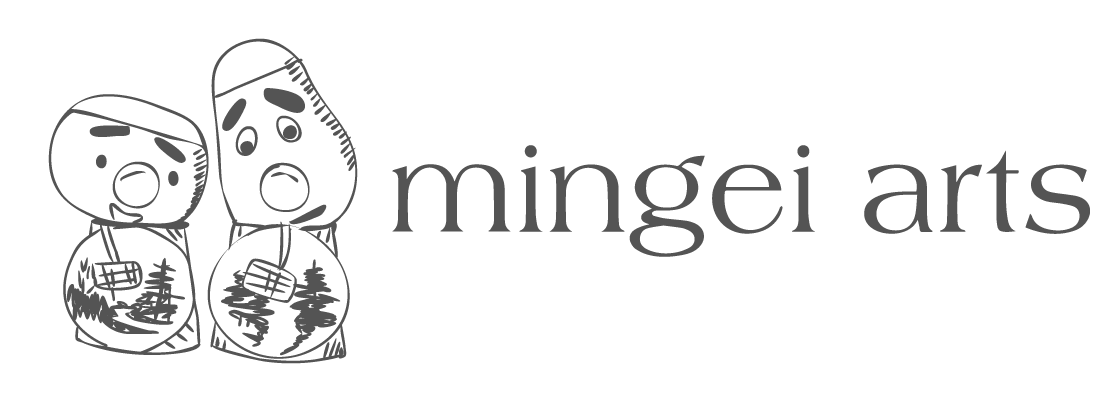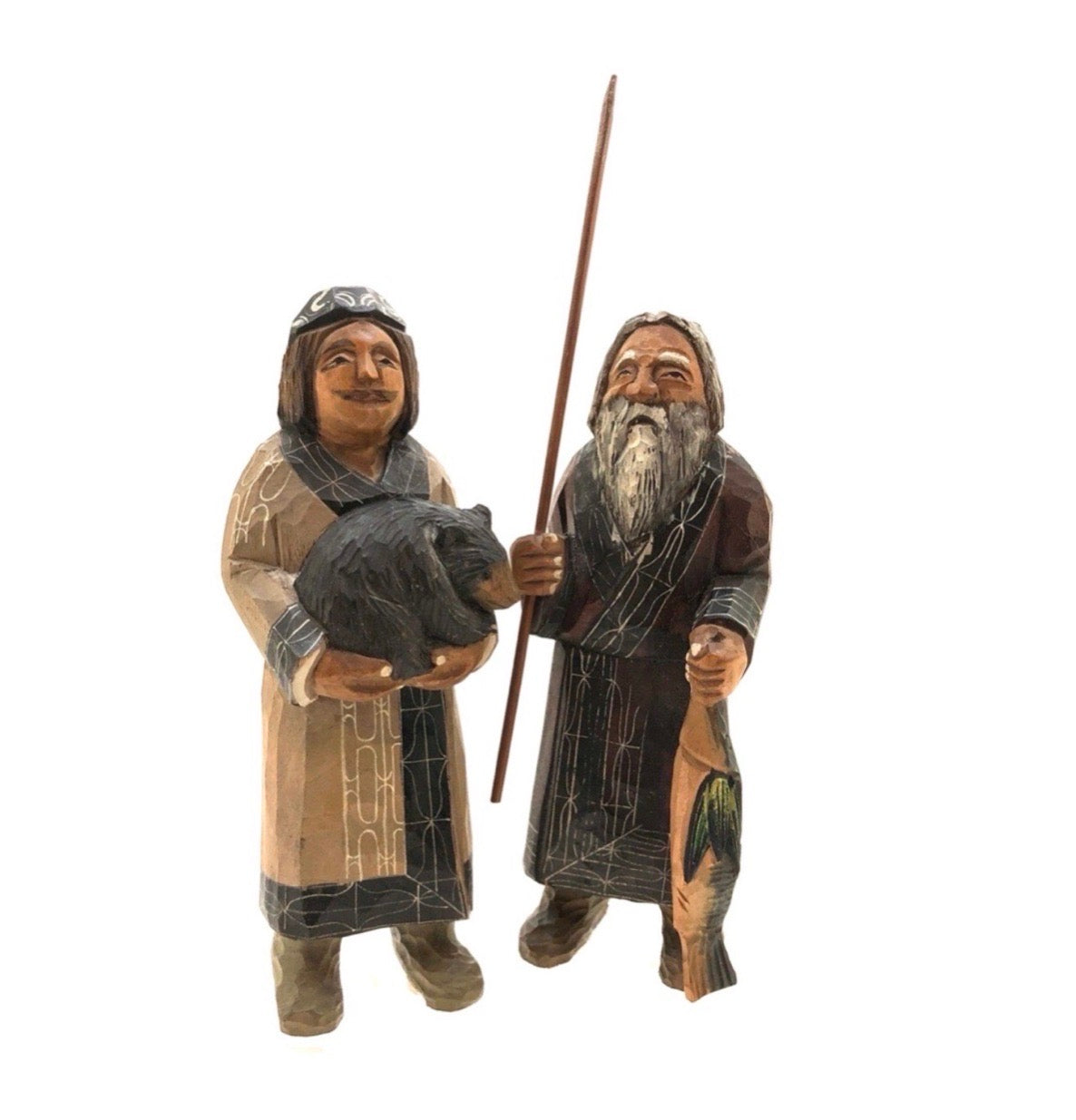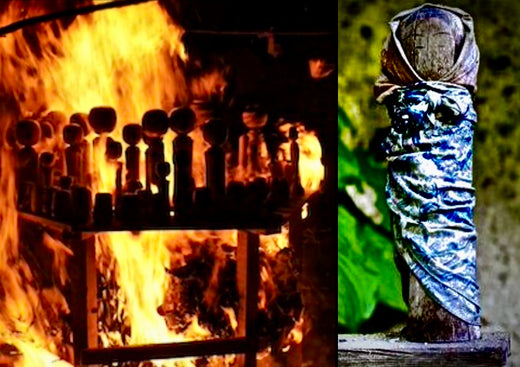The AINU are inhabitants of northern Japan, which has populated not only the main island of Honshu for centuries but also many islands off the coast of Russia and China. As a people, they were vastly different in physical appearance from other East Asian cultures, and this has presented early historians with many unanswered questions regarding their true origin.
Even today, the Ainu, whose name means “man” in their native language, are still the subject of much study and debate. subjugated economically and politically by Japan and Russia, feared and disliked because of the ‘fairness’, (i.e., heavy beards and mustaches), tall statues, strange language, and looked at as inferior, they were driven out of much of their original lands, and forced to eke out a living on the island of Hokkaido, the southern half of Sakhalin Island, and the Kurile Island chain.
Ainu folk art is a forerunner to Kokeshi and reflects many aspects of their religion, a naive, beautifully simple worship of all things natural: the sun, wind, ocean, and especially the bear, revered as the God of the mountains, (Kim-Kimuy). Along with very striking and unusual textiles, the bear is the most prevalent example of Ainu craft. it wasn’t until the 1920s that carvings of dolls were made and sold to tourists. This was because depictions of the human figure were in opposition to the Ainu’s religious beliefs.

The traditional Ainu doll is carved with knives, "Kiridashi" just like the original Hito-bori figures and wonderfully represents its culture and is found in two basic types. one is strongly carved and closely resembles our own Northwest Indian totems, and the other depicts the Ainu in their native clothing, and headdress, complete with beards and dark hair. Many also show a Shaman-type Ainu couple, unlike the authentic Kokeshi with limb, in which the woman holding the bear, and the man proudly holding a fishing rod and carp, two animals most representative of the culture. While the Ainu carvings bear little resemblance to any of the Kokeshi as we know them, the dolls are usually grouped with other Sosaku styles of Kokeshi because they do not conform to any of the traditional family such as the more classic Ningo dolls, such as the Hina, Gosho, Kimekomi, and Isho.
Two other versions of the Ainu Kokeshi of the 20th century and post-war Ainu dolls are called Ni-Po-Po. They were Totem-like and traditionally used in healing and shamanism ceremonies on Sakhalin Island located in the Russian Pacific Ocean and north of Japan. Loosely translated, Ni-Po-Po means small wooden doll, and these carvings were imbued with a spiritual purpose. The very earliest types of these dolls date back thousands of years, were mud figures, and were used as house charms to protect the woman from disease and other dangers. The Ni-Po-Po is one of the few exceptions to the taboo of depicting the human figure in the Ainu culture.




